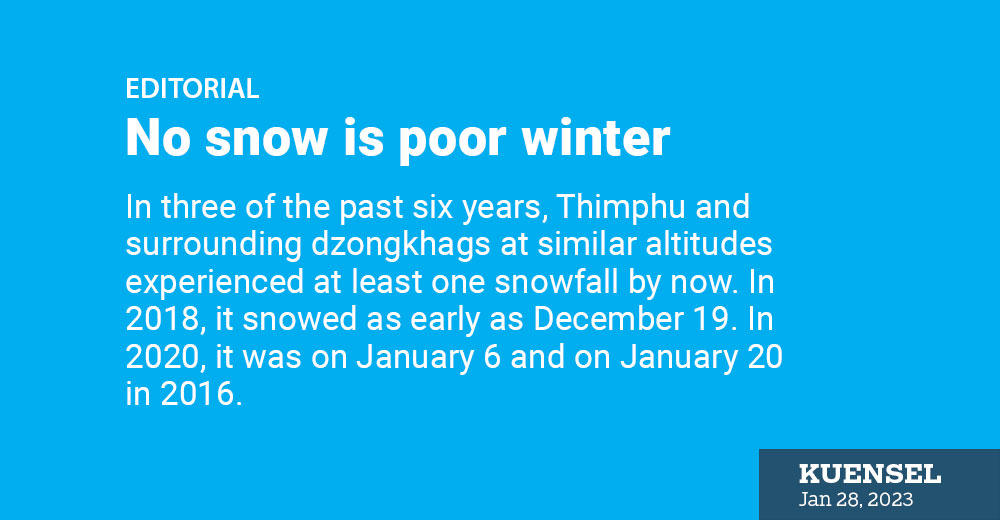In three of the past six years, Thimphu and surrounding dzongkhags at similar altitudes experienced at least one snowfall by now. In 2018, it snowed as early as December 19. In 2020, it was on January 6 and on January 20 in 2016.
The weather forecast has three “mostly sunny” days in a row across the country starting today. While it will be a warmer weekend, not snowing is a concern, especially for farmers who depend on snowfall for their winter crops like wheat. Snow is important not only for farmers but for the river system and our glaciers up in the mountains.
Not snowing in winter is a global concern as it is seen as evidence of climate change and global warming. Many cities around the world that see heavy snowfall have not experienced snowfall while in the US, unusual snowfall from a cold wave killed as many as 68 people in some parts. In Europe, ski resorts are forced to shut down as the continent experiences some of the highest January temperatures on record.
Closer to home, a climate modelling project, the International Centre for Integrated Mountain Development (ICIMOD) conducted, states that the average snow cover in the northern hemisphere has decreased by 1.5 percent since the 1970s. Climate change is blamed as one of the many factors. ICIMOD studies state that glaciers in the Hindu Kush Himalayan region, which includes Bhutan, are retreating at an average rate of 0.3 to one metre per year.
While lack of snow could affect hydrology, water for drinking and irrigation, it is the threat to our glaciers that is more worrying. Without snow the moraine dams between the glacial lakes are exposed letting it absorb more heat than when covered with snow. Our efforts to remain carbon negative is not enough in a fast heating world. Impact of human-induced climate change and global warming, it is said, is felt in the mountains first. As a mountainous country with a fragile ecosystem, it is bad news for us.
Past records show that it could still snow in February and even in March. Last year we experienced the heaviest snowfall in recent years when on February 5 even low lying areas like Punakha and Trongsa experienced snowfall. In 2017, it snowed heavily on March 11 when fruit trees in places like Thimphu, Ha and Paro were flowering.
Snowfall patterns could differ from year to year, but what is certain is that winter in general is becoming drier if not warmer. A one-time heavy snowfall like last winter could bring back snow to the mountains, but warming winter temperatures and decreasing snow is likely to continue, according to studies.


